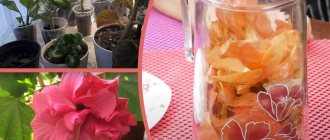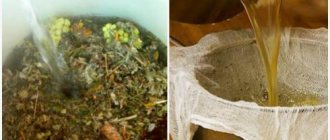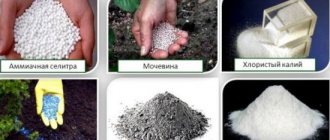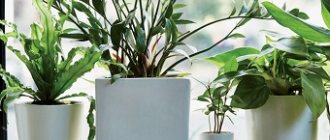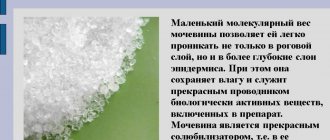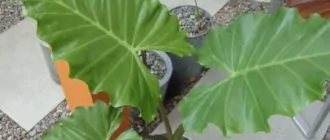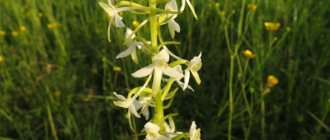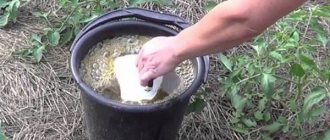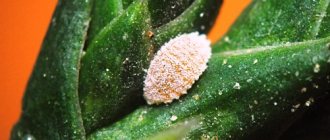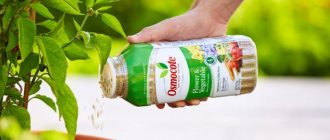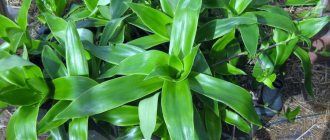Iodine is needed not only by the human body, but also by all plants. With a lack of this element, the ovaries rot and fruiting is delayed. But feeding plants with iodine must be carried out according to strict rules and the dosage must be observed.
In the garden, vegetable garden and flower garden, iodine is used not only as a fertilizer, but also as an insecticide. It also suppresses the development of viruses, bacteria and fungi. And this is not all the beneficial properties of iodine. When watering plants with iodine solution, the soil is disinfected and at the same time the immunity of the crops is strengthened.
General rules for using iodine
- Iodine is not used during plant dormancy.
- A pharmaceutical alcohol solution of iodine (5%) is used in microdoses. As a rule, only 1-2 drops are used per 2 liters of water . If you increase the concentration, you can burn the plants and destroy beneficial soil bacteria.
- Seedlings and seedlings are watered with iodine solution only after the plants have taken root in a new place and become stronger.
- Fertilizer should not fall on the root collar of the plant. And before you spill the soil with iodine solution (preferably warm!), the soil must be thoroughly moistened.
- To increase efficiency, it is recommended to add wood ash to the fertilizer at the rate of 1 part ash per 10 parts iodine solution.
- When foliar feeding, it is best to spray the iodine solution through a fine sprayer. From the resulting “fog,” the element is absorbed better by plants – by 65-90%.
Scientific facts about fertilizer
In open ground, iodine comes from precipitation, so crops growing outside receive this substance naturally, at least in small quantities. At home, you need to saturate the soil yourself. Scientific experiments were carried out, during which it turned out that with proper feeding, all indoor flowers reacted positively: the plants recovered faster from illnesses, the buds became more lush and beautiful, and the color of the leaves was brighter.
There is no exact explanation why iodine as a supplement gives such excellent results. Scientists have suggested that this element regulates the functioning of enzyme systems, thus improving metabolism in plants. But no matter how much controversy there is around feeding with this element, the fact is obvious: the benefits of this substance are enormous.
Iodine is able to “reanimate” plants even in the most hopeless cases. Research was carried out on indoor flowers infected with diseases. Here are some examples:
Iodine also has a positive effect on garden crops as a fertilizer. There was a significant increase in the number of fruits, as well as an improvement in their taste.
Application of iodine for vegetable seedlings
Feeding with iodine is especially good for tomatoes, cucumbers, eggplants, and peppers. To obtain friendly shoots and healthy seedlings, seeds are soaked for 6-8 hours in a solution prepared from 2 glasses of water and 1 drop of pharmaceutical iodine.
Before planting in open ground, seedlings are fed with iodine at the root only once. To do this, 1 drop of alcohol solution is diluted in 3 liters of water. Plants planted in the ground and grown up are watered with a solution prepared from 3 drops of iodine diluted in 10 liters of water. 1 liter is poured under each strong bush.
Feeding tomatoes with iodine
Grown plants need iodine supplements even more, as they run the risk of late blight. To protect tomatoes from this insidious disease, fertilizing with iodine and milk is used. Whey in a 10-liter bucket is diluted with water in a ratio of 1:10, 40 drops of iodine and 15 ml of hydrogen peroxide are added. The resulting solution is sprayed onto the bushes 3 times per season with an interval of 10 days. Processing is carried out in the evening.
You can protect tomatoes from late blight using another solution. 2 tbsp. The ash is dissolved in 2 liters of water and left for a week. Then this infusion is added to 8 liters of boiling water, mixed thoroughly and cooled. Then add 10 ml of an alcohol solution of iodine and 10 g of boric acid and leave for 12 hours. After this time, the resulting medicine is diluted with settled water (1:10) and watered at the root of each tomato bush.
To rid tomatoes of rot, the bushes are sprayed with an iodine solution several times a season (10 ml of pharmaceutical iodine is diluted in 10 liters of water).
Feeding cucumbers with iodine
Against powdery mildew, cucumber lashes are generously sprayed with a mixture of milk (1 l), water (9 l) and 5% iodine (10 drops). The soil under the plants is treated with the same product. The procedure is repeated once a week until the symptoms of the disease disappear.
Fertilizing strawberries with iodine
For garden strawberries (strawberries), iodine is an excellent growth activator. This remedy strengthens the immunity of overwintered bushes. To do this, in early spring, after the snow melts, the plantings are watered with pharmaceutical iodine (10 drops), dissolved in 10 liters of settled water. A total of 3 such feedings are carried out with an interval of 10 days. This procedure not only strengthens the plants, but also protects them from gray rot.
Feeding cabbage with iodine
To prevent cabbage from rotting and forming a large head of cabbage, it is watered at the root with the following composition: 40 drops of iodine are dissolved in 10 liters of water. For each plant, use 1 liter of solution. The same fertilizer can also be used for foliar feeding. But in this case, 5 drops of iodine are diluted in 10 liters of water.
Special fertilizers with iodine
You can also buy a solution with iodine in the store. These preparations are used to treat the wounds of a green pet and also prevent yellowing of the leaves. This contributes to the speedy recovery of the flower and the abundant appearance of foliage in bright colors.
The most popular drug among flower growers is “Bioiodis”. It consists of environmentally friendly products and is not capable of harming the plant when used correctly. In addition to iodine, it contains vermicompost and other useful microelements.
To avoid overdose, you should strictly follow the instructions on the drug. “Bioiodis” is used to spray leaves and apply fertilizer directly to the soil. To get the life-giving mixture deep into the soil near the rhizome, you can use an ordinary syringe. Pre-soaking in Bioiodis before planting in a pot is also beneficial for plants.
The use of iodine against pests
Garden insects are also afraid of Yoda. To destroy cockchafer larvae in spring and autumn, all perennial plants are watered at the root (not on the leaves) with an iodine solution (15 drops per 10 liters of water). Approximately 1 liter is used for each bush. If there are too many pests, then up to 5 liters of this product can be poured under an adult plant.
Against weevils, in early spring the soil is spilled directly over the snow with an iodine solution (1 tsp of iodine per 10 liters of water). And to combat aphids, plants are sprayed with 10% Farmayod.
How to water indoor plants
For indoor flowers, you need to fertilize with iodine solution either at the root, watering closer to the walls of the vessel, or along the leaf. It is prohibited to introduce the nutrient composition into dry soil; it must first be watered with settled water. If you exceed the dosage, then instead of benefit, green spaces will receive harm in the form of wild flowering of the bush and lack of buds. Using a basic iodine solution for watering home crops will both saturate them with nutrients and protect them from pests and diseases.
The use of iodine for indoor flowers
Houseplants also love iodine. To prolong flowering and improve its quality, 1-4 drops of pharmaceutical iodine are diluted in 1 liter of water and watered under the root. If the flower loses its attractiveness, add 1 drop of iodine to the complex fertilizer (per 3 liters of water) and water the plant 3-4 times with an interval of 10 days.
To strengthen the immune system, water home flowers with a solution (1 drop of iodine per 1 liter of water) 3 times with an interval of 10-14 days. To save a weakened rose, Humate 7 is diluted in water and iodine is added (1 g per 10 liters of water). 50 ml of the resulting solution is poured under each indoor rose.
It turns out that iodine is not the only remedy in the home medicine cabinet that can be used to feed and protect plants. Find out what other medications can be used to improve the condition of green pets in the article Medicines for people - first aid for plants.
What plants need iodine
The nutritional composition based on the pharmaceutical product is particularly beneficial for decorative deciduous and flowering plants. It is used for indoor flowers such as violet, daffodil, geranium, rose, jasmine, begonia and others. It is especially good to use an iodine solution for domestic crops, which for some reason are rarely replanted. Such specimens remain in the same soil for a long time, gradually depleting it. It is impossible to replenish the amount of useful components with ordinary water, as a result of which indoor flowers wither and die.
Advantages and disadvantages
One of the main tasks of iodine is its active participation in photosynthesis. It also promotes oxygen enrichment and helps normalize metabolic processes at the cellular level: nitrogen absorption, protein synthesis. The beneficial effect is noticed immediately, as green mass increases and the color of the foliage noticeably improves.
If vegetable or flower crops lack iodine, this is noticeable by:
- reduction in yield as a percentage;
- fruit ripening is delayed, and the harvest itself is small and deformed;
- weakened immunity;
- suspension, developmental delay.
Some complex fertilizers contain iodine. You should ask about the availability of such a component immediately at the time of purchase. If you couldn’t find a fertilizer/iodine-containing product, a regular medical product will do.
The result of using a recipe with iodine prepared at home will be:
- providing protection from fungal diseases not only to plants, but also to soil;
- improving the quality of products: appearance, shape, taste;
- increasing the storage duration of the harvested crop;
- beneficial effect on the functioning of the human body;
- strengthening the immune system and accelerating growth, development, fruiting, and ripening of fruits.
There are also disadvantages of application. Do not forget that the iodine solution purchased at the pharmacy consists of water and alcohol in a ratio of 1 to 5. And there is just more ethanol (92-95%). At this dosage, it kills the plant and causes severe burns.
Therefore, during the preparation of the working solution, the recipe and the ratio of the components are carefully studied. Only in diluted form is it permissible to treat green spaces of all types.
Reviews from gardeners about fertilizing with iodine
The opinions of gardeners and vegetable gardeners regarding the use of iodine are strikingly different. Some consider it to be an effective supplement, while others, who have had negative experience using the drug, believe that it is better to do without it.
Ilya, 30 years old, amateur gardener, Rostov region. I use iodine to grow tomatoes. Application experience – several years. The product is cheap, safe and effective. I specifically compared how iodine affects productivity – it increases it by 10%.
Raisa, 40 years old, amateur vegetable grower, Moscow region. I use iodine sprays as an antifungal agent. The main thing is not to overdo it; this drug must be handled with extreme caution. Somehow I exceeded the dose and burned the seedlings.
A simple and affordable drug, sold in every pharmacy, can be an excellent growth stimulator and protection against many diseases. By properly treating seeds and seedlings with iodine, you significantly increase the chances of getting a good harvest.
Useful tips
The use of iodine has its own subtleties. Experienced gardeners reveal their secrets and share useful tips with novice gardeners.
- Before applying any fertilizers, the soil is moistened by watering. This applies to iodine to a greater extent, since the active substance of this pharmaceutical drug instantly causes burns of the root system or leaves, stems if foliar feeding is performed.
- You should not increase the dosage of iodine, since plants tend to accumulate it. Most of it ends up in fruits, which are then consumed by people. Excess iodine will lead to health problems if you eat such fruits regularly.
- Not all crops benefit from iodine equally. If the plant has just been transplanted or planted in open ground, any fertilizing is prohibited, including iodine fertilizing. The culture must strengthen, take root, and go through a period of adaptation. Only then can treatment with iodine begin. Before planting, it is permissible to disinfect the designated area with an iodine solution.
Reviews
I don’t really want to use chemicals to work in my own garden, regardless of whether they are pharmaceutical or industrially produced. Although if you look at it, if you use biological products manufactured at specialized enterprises, then you don’t need any chemicals. And iodine, in my opinion, is not a very effective remedy.
Anton, 43 years old, Vichuga
I want to confirm that after treating cabbage beds with iodine, I have no problems growing it. There are no aphids or whites. The heads of cabbage are normal, without damage or stains. In addition, I can offer a recipe for using iodine to treat young cucumber sprouts. To prevent their leaves from turning yellow, they need to be sprayed with a mixture of 30 drops of iodine, 1 liter of whey and 20 g of laundry soap, grated and dissolved in a glass of water. All substances are poured into a bucket of water. I spray the leaves 2 times every 10 days, early in the morning, after watering the cucumber bushes.
Marina, 34 years old, Bataysk
Everyone who is engaged in vegetable growing will inevitably someday be faced with the choice of what to use to feed the plants, what to give preference to? It is possible that not everyone takes on faith what they read about on the pages of newspapers and on the blogs of amateur gardeners. But you still need to check how their advice works, at least once. And only then draw the appropriate conclusions.
Source
